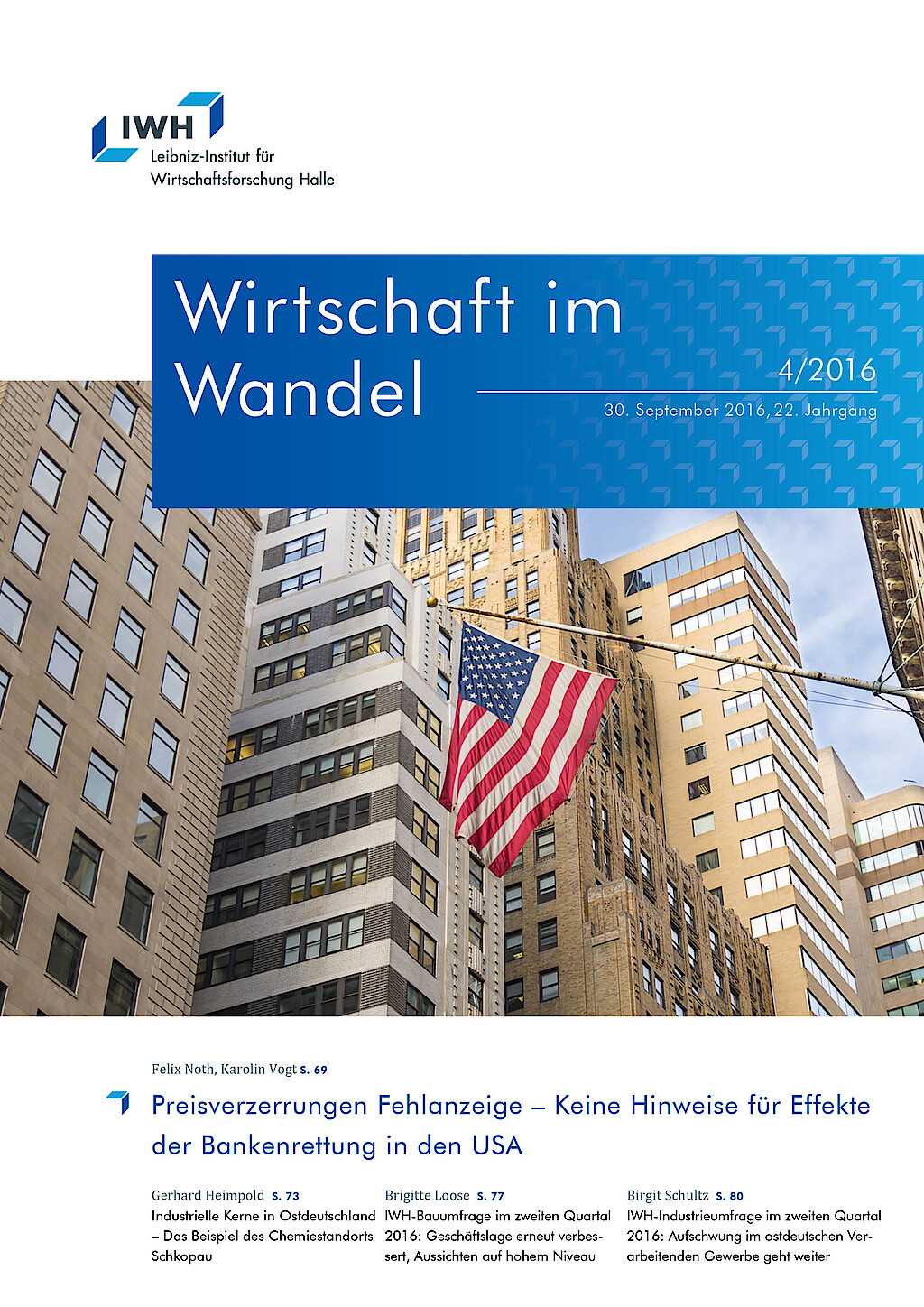No Sign of Price Distortions – Lack of Evidence for Effects of US Bank Bailouts
Whom to contact
For Researchers

Vice Department Head Research Group Head
If you have any further questions please contact me.
+49 345 7753-702 Request per E-MailFor Journalists

Internal and External Communications
If you have any further questions please contact me.
+49 345 7753-832 Request per E-MailIWH list of experts
The IWH list of experts provides an overview of IWH research topics and the researchers and scientists in these areas. The relevant experts for the topics listed there can be reached for questions as usual through the IWH Press Office.
Related Publications

Preisverzerrungen Fehlanzeige – Keine Hinweise für Effekte der Bankenrettung in den USA
in: Wirtschaft im Wandel, 4, 2016
Abstract
Im Zuge der Finanzkrise der Jahre 2007 bis 2009 rückte die Kontroverse um staatliche Notrettungsprogramme für den Bankensektor verstärkt ins Blickfeld. Diese Programme haben das Ziel, den Finanzsektor und somit auch realwirtschaftliche Entwicklungen zu stabilisieren. Dem stehen die finanziellen Kosten zu Lasten des Steuerzahlers, erhöhte Risikoübernahmen durch den Staat sowie mögliche verzerrende Wirkungen auf die Marktstruktur gegenüber. Dieser Artikel diskutiert mögliche Preisverzerrungen durch das Troubled Asset Relief Program (TARP) in den USA aus dem Jahr 2008 vor dem Hintergrund eines aktuellen Forschungsbeitrags, der die langfristigen indirekten Effekte des Programms innerhalb der Gruppe der nicht unterstützten Banken untersucht. Hierbei zeigen sich keine Hinweise dafür, dass das Programm zur Bankenrettung zu nachhaltigen Unterschieden im Bankenwettbewerb nach 2010 geführt hat. Die Zinsmargen von Banken mit einer höheren Rettungswahrscheinlichkeit stiegen nur in der direkten Folgezeit von TARP, d. h. im Jahr 2010 an. Ein signifikanter Anstieg des Kredit- und Depotwachstum der Banken für den Zeitraum von 2010 bis 2013 kann nicht verzeichnet werden.



